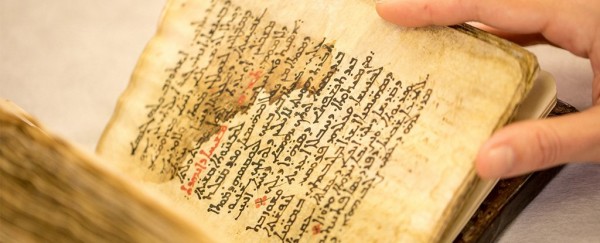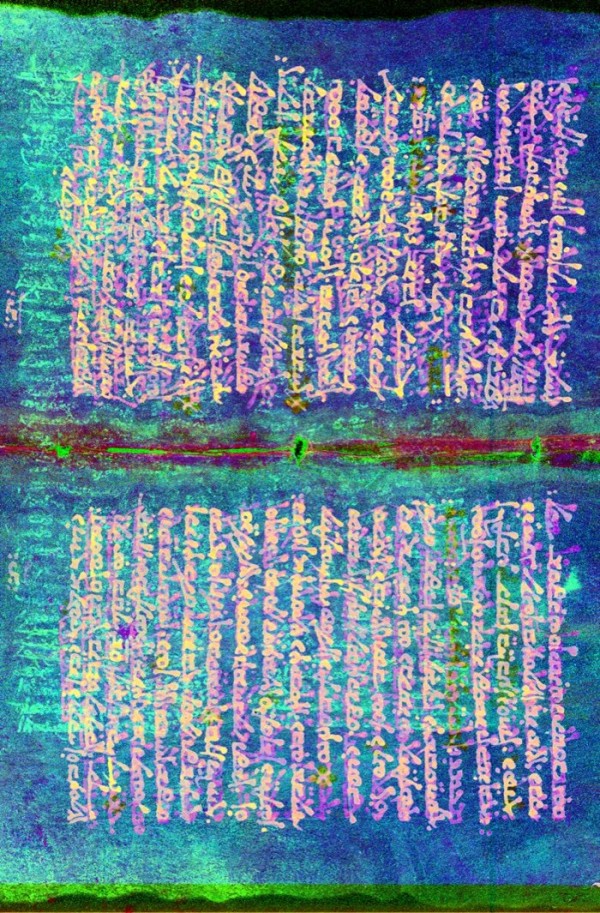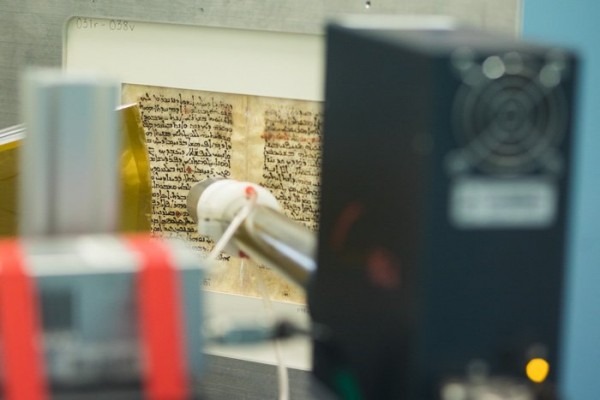
(Farrin Abbott/SLAC)
ishtartv.com - sciencealert.com
PETER
DOCKRILL, 15 MAR 2018
They
say never judge a book by its cover - but sometimes you can't even trust the
words written on the pages.
This
week, scientists in California are busy investigating an archaic hymn book of
religious text dating back to the 11th century. In ordinary circumstances, this
weathered volume would be a priceless historical artefact in its own right. But
these are not ordinary circumstances.
This
time around, the religious script is a smokescreen: an ancient cover-up
concealing a far older truth – one that dates back many more centuries into the
past, to a man considered one of the fathers of the medical science we have
today.
That
man was Galen of Pergamon, a
Greek physician and philosopher born under the Roman Empire during the 2nd
century, who through his teachings and writings became known as one of the
greatest medical minds of antiquity.
But
not all those communications were carefully tended by history.
The
parchment being examined by scientists this week at the Department of Energy's SLAC National Accelerator Laboratory
was originally inscribed with the teachings of Galen, translated by an unknown
hand centuries after the physician's death, before being hidden by psalms for
an entire millennium.
Before
the cover-up, Galen's medical treatise was written down in ancient Syriac
during the 6th century, most likely by someone at St. Catherine's Monastery in
Egypt, researchers think.
Then,
around 500 years later, this important ink was scraped off the pages and
overwritten with religious psalms – almost certainly for economical reasons
(parchment wasn't cheap) and not because there was a malicious agenda to
conceal Galen's work.
For
nearly a decade, scientists and scholars have been using multispectral imaging
to try to reveal the scrubbed traces of the ancient underlying text, and thanks
to a team at SLAC's Stanford
Synchrotron Radiation Lightsource, we might finally succeed in deciphering
the hidden words this week.
The
researchers are using high-energy X-rays generated by a cyclic particle
accelerator to expose infinitesimal residues of ink left buried in the
parchment from the original inscriptions – giving researchers an unprecedented
glimpse at some of the foundations of medical knowledge as they existed almost
2,000 years ago.
In
the image above, the vertically oriented characters are the religious text of
the 11th century, while the fainter horizontal Syriac is Galen's translation
hidden underneath.
Previous
efforts have sought to use ultraviolet, visible, and infrared wavelengths to
penetrate the lost writings – but much like the ominous inscription concealed
in Tolkien's One Ring,
sometimes it takes a more extreme trick to reveal words intended to be hidden.
"The
first initial results are incredibly mind-blowing," classicist Peter
Pormann from the University of Manchester in the UK told Newsweek.
"This
is a unique witness to this particular text."
The
new imaging effort, which takes 10 hours to analyse each of the 26 pages
selected from the volume, has already revealed sections of the text not seen by
anybody in a thousand years, including a previously unreadable preface.
If
they're successful, it will open a new chapter in our understanding of one of
medicine's earliest visionaries – and with another 200 pages of hidden
inscriptions still remaining, who knows what scraped secrets we'll discover?
"Galen
is the most important and most influential physician arguably of all
time," Pormann told Newsweek.
"This
is basically our history, this is how medicine developed."

(Farrin Abbott/SLAC)

(University of Manchester/SLAC National Accelerator Laboratory)

(Andy Freeberg/SLAC)
|